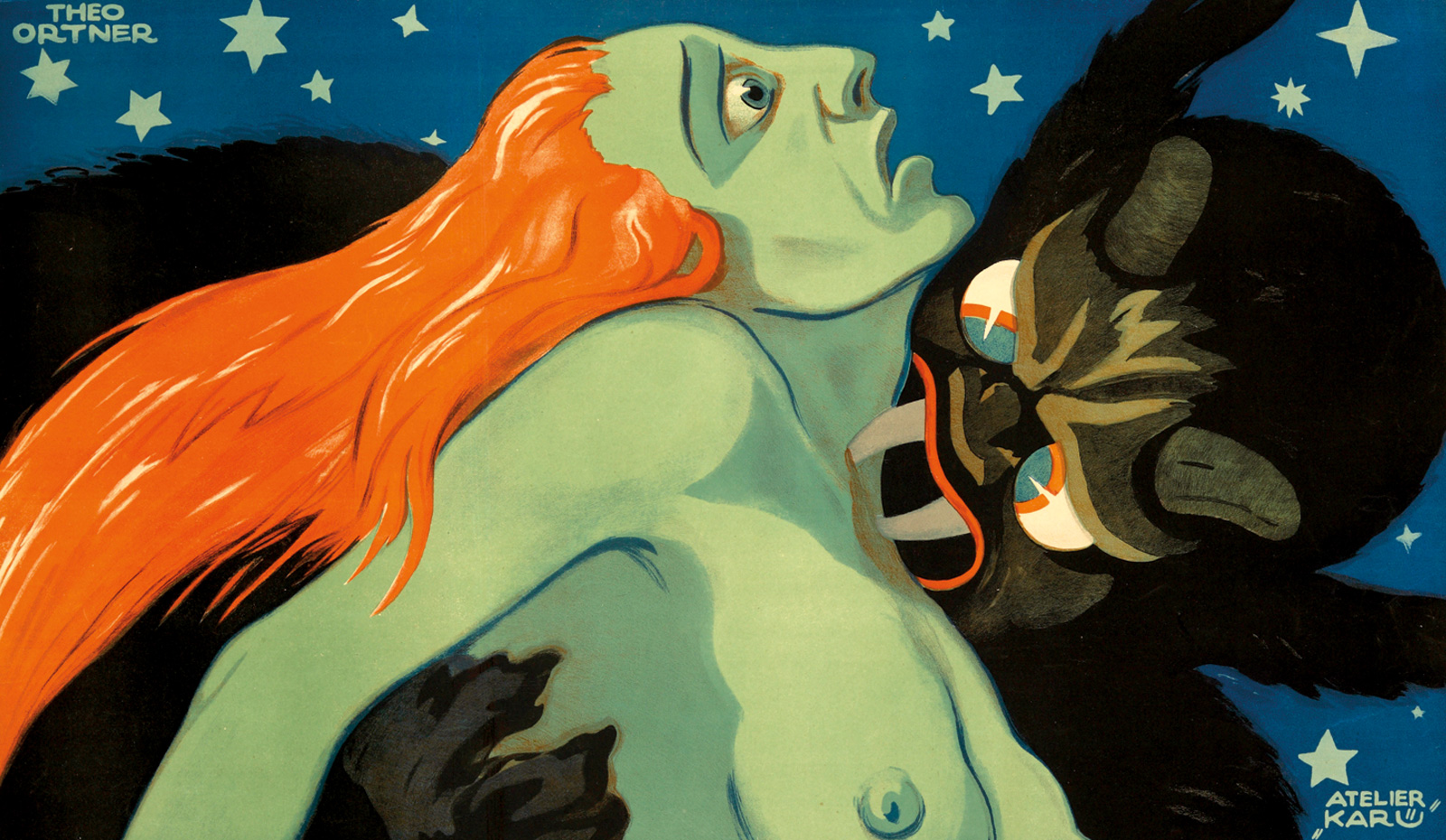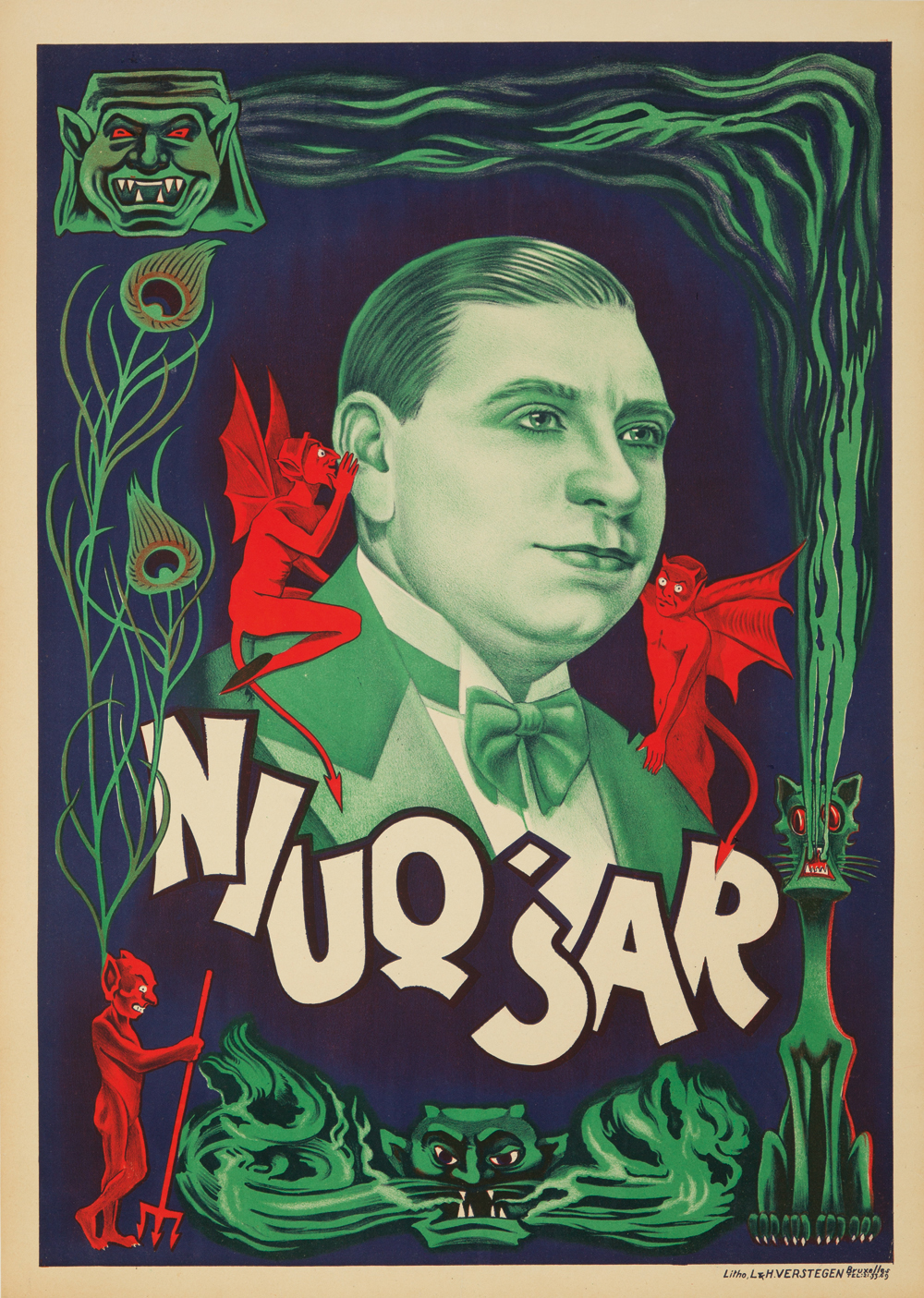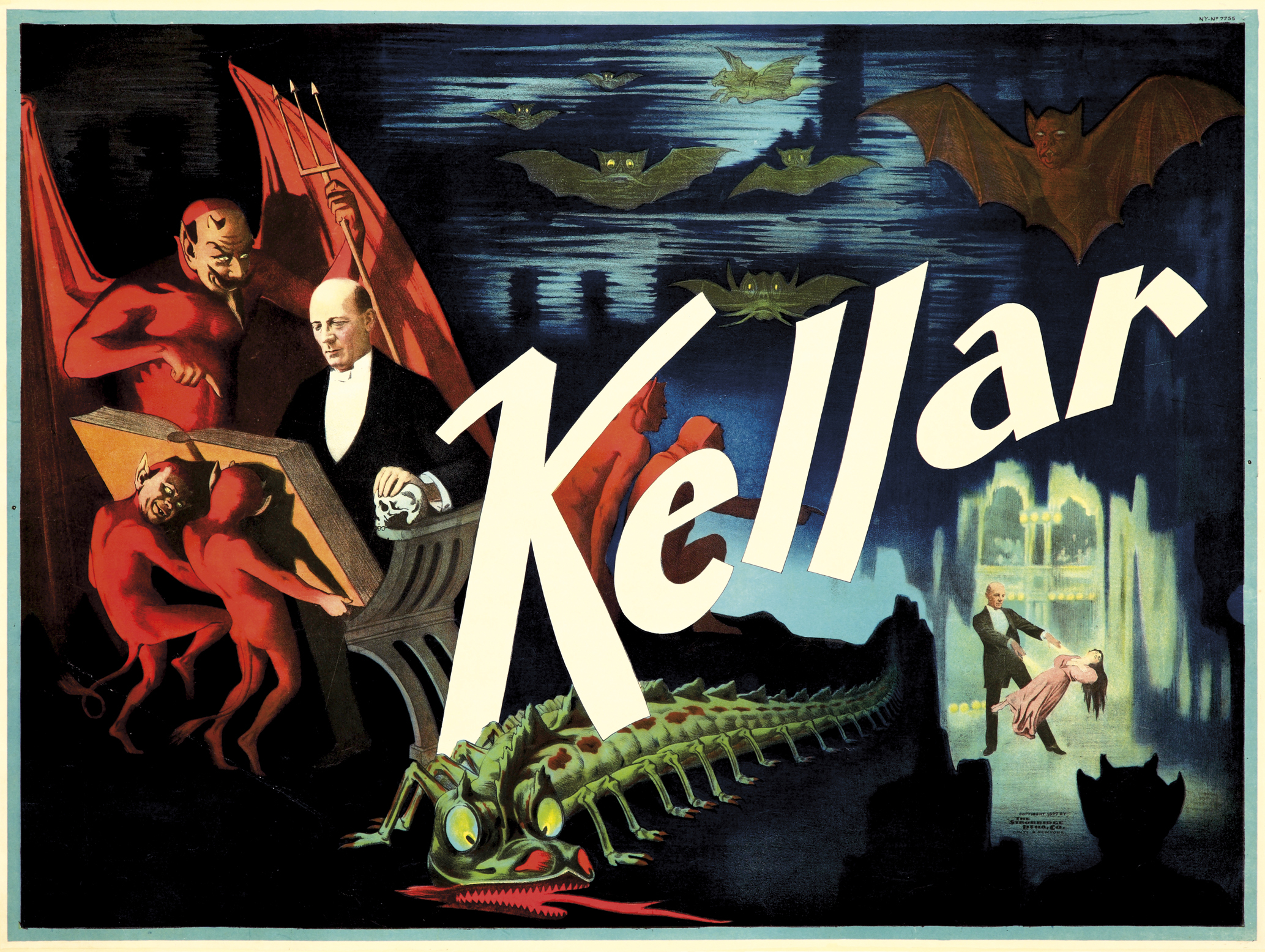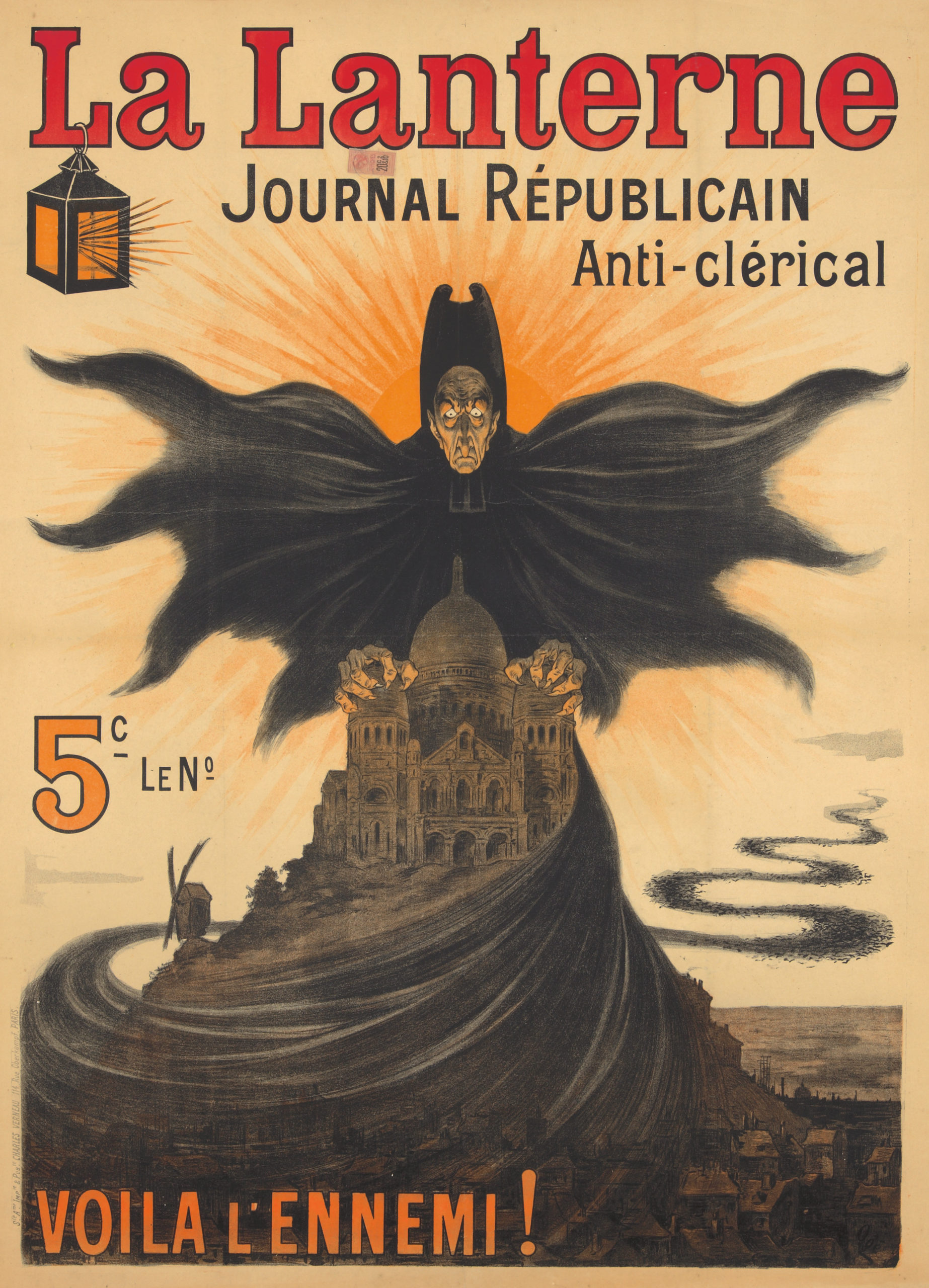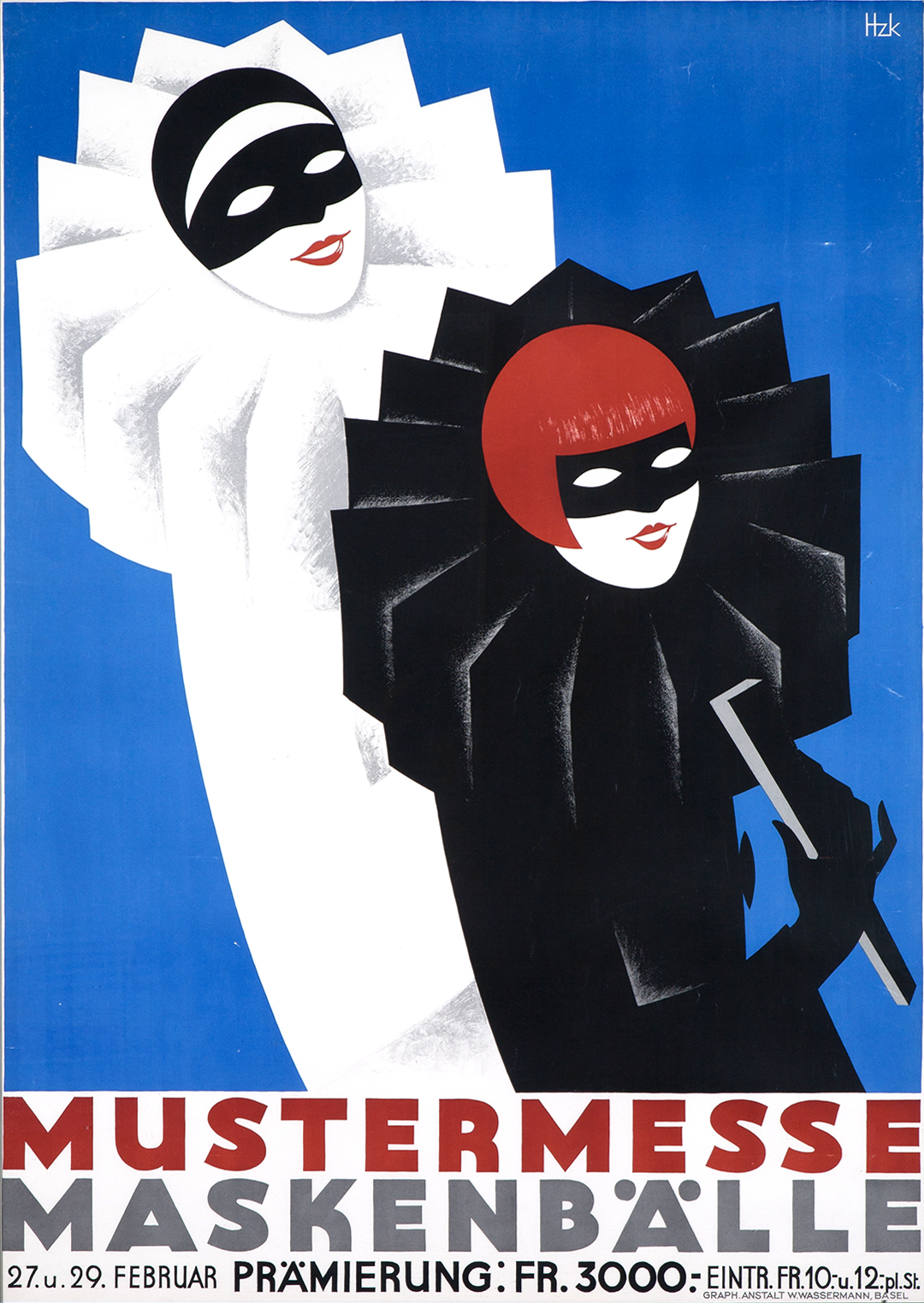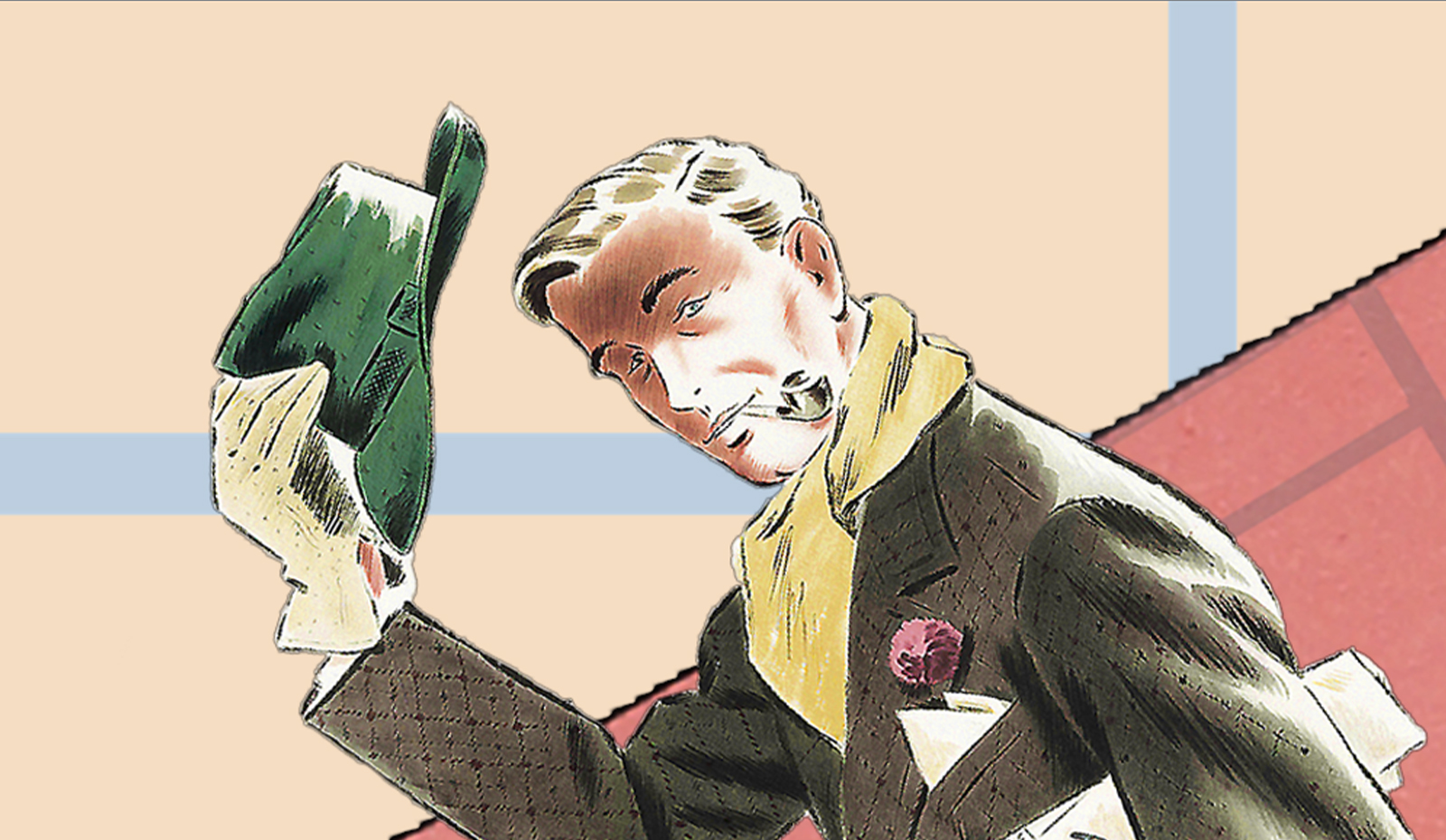Monster Mash: Spooky scary posters from our archives
Halloween 2020 is nothing like other years. Without trick-or-treating, costume parties, and haunted houses, we decided to dig through our poster archives to find the spookiest, scariest, and most bone-chilling images. Enter at your own risk.
In all his blood-red evil glory, this rendition of the Prince of Darkness is among the most frightening in poster history. But the sneering smile belies the real motive of the poster: to promote a lamp oil bearing Lucifer’s name. It’s both unconventional and unsettling.
“Howard Thurston did not actually appear with a skull during his performances, but the artist of this elegant poster realized that the image of Thurston contemplating death—combined with the question ‘Do the Spirits Come Back?’—captures the essence of the spirit séance and is the perfect advertisement for his show” (Magic, p. 317).
One of the earliest French silent films to utilize primitive special effects, “Le Fantôme du Moulin Rouge” chronicles the misadventures of a young man who, after being subjected to an experiment gone awry, can now leave his body and travel invisibly around Paris. The narrative allowed for myriad Surrealist references and cinematic tricks, while also pulling along a sweet little romance between the specter and a young lady.
One of several posters Schnackenberg created for this Munich-based ballet duo, this image promotes an act they dubbed “Light and Shadows”—a spin on the “Beauty and the Beast” theme. It is at once highly expressionistic and extremely tender—a remarkable balance of emotions in a visually gripping composition.
Not to be confused with the 1932 German horror film of the same name, this “Der Vampyr” was directed by Fred Stranz in 1920, and is one of the first vampire-themed films. Ortner does not shy away from fear and violence, but in fact goes full-tilt to provide us with an awesomely horrifying villain.
Who was the Spider Lady? No one really knows when this poster was created—some say 1915, others suggest ‘1920s,’ still others insist 1937. Likewise, no one knows when the first Spider Lady attraction appeared at a circus sideshow. But “Spidora,” as she was known on the Coney Island and Atlantic City boardwalks, was indeed a creature with a woman’s face, smiling out from spider legs and a web on the wall—a trick of mirrors and geometry. A very special remnant of carny culture, this time with a French accent.
La Lanterne was a newspaper run by the French Republican party—not to be confused with the American group of the same name. These republicans were left-leaning and very involved with the various worker’s movements. Here, a dragon-like priest sinks his talons into the roof of Sacré-Coeur in Montmartre—a church originally constructed as penance for the crimes of the Commune—emphasizing the church’s defiance of and disrespect for the republic and its workers.
Le Roy, Talma, and Bosco were a traveling magic act made up of a husband and wife team and a frequently-replaced third performer who went by the name of Bosco. As the poster notes, their signature routine involved switching the heads of both people and animals. A severed head on a platter with a watching devil? Classic Halloween.
It’s better with a book.
Order the Rare Posters Auction catalogue now
for full details on all 500 lots

